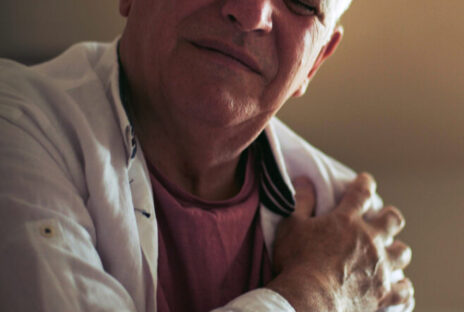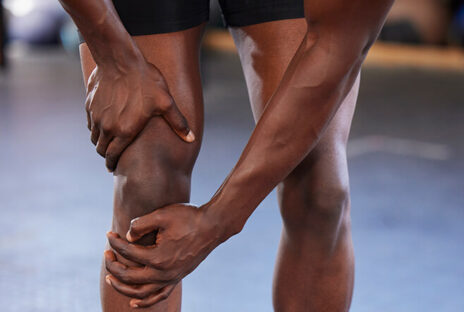Which sports knee injury do I have?
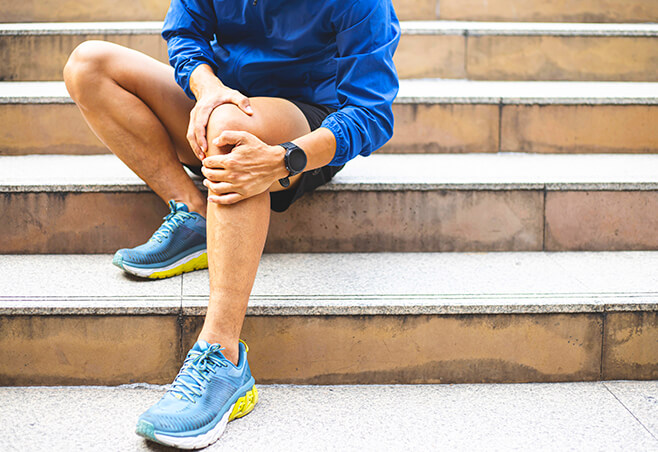
The roster of famous athletes with knee injuries includes some GOATs—such as Tiger Woods, Tom Brady and Serena Williams—proving that all the money in the world can’t prevent ACL injuries and meniscus tears among athletes. Anyone who competes professionally or recreationally should guard against suffering a sports knee injury by knowing and addressing the symptoms immediately.
We tend to think of a sports knee injury as a total blowout, but it can be defined in numerous ways: an injury that forces an athlete to stop playing or practicing, decreases activity, or needs medical care.
Many athletes who experience a sports knee injury may find their pain worsening over time, as a weakened knee can cause them to experience additional injuries. Ignoring sports knee pain can have a long-lasting impact on a person’s lifestyle and ability to stay active with age. Keep reading to learn about the top causes of athletic knee pain so you can spot them when they occur, what a sports knee doctor can do for you, and which are the worst knee injuries in sports.
Why do athletes often have knee problems?
Your knees are responsible for steering your body in the right direction and keeping the lower half of your body stable.
There are numerous causes for knee pain in athletes, including contact and non-contact injuries. Non-contact sports injuries can occur from jumping, landing, running, kicking, twisting and switching directions with intensity, as well as practicing too much without sufficient recovery.
Athlete knee pain accounts for 41% of all sports injuries. One-fifth of those injuries involve the anterior cruciate ligament (ACL). Other injuries, to name a few, include tendonitis, contusions, runner’s knee, meniscus tears, MCL tears, and patellar fractures,
The increased incidence of knee pain in younger athletes has been called an epidemic, with ACL injuries topping the list of sports knee problems.
Most common acute knee injuries in athletes
Sports-related knee pain can signal several problems picked up during competition or training. Here is a list of common causes of sport-related knee pain:
- ACL injuries,
- Other ligament injuries (MCL, PCL, LCL),
- Fractures,
- Articular cartilage injuries,
- Patella dislocations,
- Meniscus tears,
- Tendon tears,
- Muscle strains,
- Contusions and
- Bursitis.
Anterior cruciate ligament (ACL) tears in athletes
ACL tears occur when the knee twists while your foot is planted. Landing awkwardly from a jump, pivoting and changing directions cause the most ACL injuries. A partial or complete ACL tear can sideline a player for several months or more. A full tear usually requires surgery to safely return to sports, which can take up to a year.
- Symptoms: A popping sound or sensation in the knee, mild to severe pain, knee swelling within a few hours and difficulty weight-bearing.
- Treatment: Rest, ice, over-the-counter anti-inflammatories, bracing, physical therapy and possibly surgery to repair or reconstruct the torn ligament.
4 facts about ACL injuries in athletes
- Statistics show a higher rate of ACL injuries in female athletes.
- ACL injuries from direct collisions, such as football tackling, are less frequent than non-contact ACL injuries.
- ACL tears top the list of NFL knee injuries and are often season-ending.
- ACL injuries are a common cause of acute knee pain in young athletes.
Patella dislocations
A patella (knee cap) dislocation occurs when the kneecap is out of alignment. Like an ACL injury, this may occur with or without a contact injury. Patellar dislocations are common among kids and young adults who play sports. It’s possible to pop the kneecap back in place if it’s not too painful, but if you do, see a knee specialist afterward to check for a fracture or other associated problems.
- Symptoms: A popping sound, intense pain, buckling, sudden swelling, visible dislocation with deformity and inability to move or straighten the knee
- Treatment: Manually putting the kneecap back in place, recovery at home (rest, ice, compression, elevation, over-the-counter meds), physical therapy, bracing and MRI to check for further damage and possible surgery.
Sports-related fractures of the knee
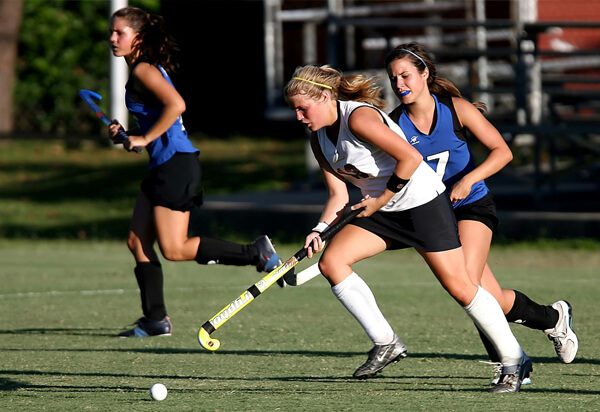
Common sports-related knee fractures include fractures of the tibial spine and patellar fractures.
Fractures of the tibial spine usually occur in younger patients who are still growing. This injury happens when the ACL ligament pulls away a portion of the tibial spine (the bony area of the shin at the attachment of the ACL). We see this type of injury in children and adolescents because their bones are still developing and are more vulnerable to fractures than a complete ligament tear.
Unlike a typical ACL tear, a tibial spine avulsion involves damage to the bone attachment of the ACL on the tibia rather than just the ligament itself. Depending on the severity of the injury, surgical reattachment of the bone with the attached ACL may be required.
Patellar fractures are breaks in the kneecap, often caused by direct contact during sports or by falling onto the front of the knee and striking the kneecap on the ground.
- Symptoms: Pain, swelling and inability to straighten the knee or walk
- Treatment: Casting or bracing if bone fragments remain in place, surgery if the bone fragments are displaced.
Medial (MCL) & lateral collateral ligament (LCL) injuries
The collateral ligaments connect the upper and lower leg bones around the knee joint, providing stability. The LCL (lateral collateral ligament) is on the outside of the knee, and the MCL (medial collateral ligament) is on the inside. Injury is caused by a direct impact to the opposite side of the knee (for example, an MCL is injured by forceful contact to the outside of the knee, which forces the knee inward and injures the inner knee). MCL injuries are much more common than LCL injuries.
- Symptoms: A popping sound at the time of injury, pain, localized swelling on the inside part of the knee over the area of MCL injury, and a feeling of knee instability.
- Treatment: Rest, ice, compression (bracing), elevation, crutches and physical therapy. Surgery is rarely performed for isolated MCL tears.
Athletes and meniscus tears
The meniscus is a cushion of shock-absorbing cartilage between the femur (thigh bone) and tibia (shin bone). Sports-related injuries typically occur when the athlete forcefully twists or pivots the leg while the foot is planted. The knee remains stable with a small meniscus tear, and some athletes may continue to play.
- Symptoms: A popping sound at the time of injury, catching or locking of the knee, limited range of motion, stiffness, swelling and feeling of the knee giving way.
- Treatment: Rest-ice-compression-elevation (R-I-C-E), physical therapy and injections (e.g., steroids and platelet-rich plasma) may be beneficial. Meniscal tears often require arthroscopic surgery for athletes to return to sports.
Knee tendon injuries from sports
Tendons that attach the kneecap to the tibia bone below the joint and the quadriceps muscles above it, which help straighten the knee, are susceptible to tears from a large amount of force on the leg or knee.
Quadriceps tendon tears occur when the tendon attaches to the top of the kneecap, and patellar tendon tears occur when the tendon attaches to the bottom of the kneecap. In either case, the patient can’t actively extend the knee or walk without crutches and a brace.
- Symptoms: A popping sound, pain, tenderness, inability to straighten the knee, bruising, cramping, indentation at the site of tendon rupture, difficulty walking, knee instability and an abnormal position of the kneecap (higher with a patellar tendon tear, lower with a quadriceps tendon tear) compared to the normal knee.
- Treatment: R-I-C-E, crutches, bracing and physical therapy for small partial tears. Surgery is required to reattach the tendon for complete tears.
Posterior cruciate ligament (PCL) tears among athletes
The PCL ligament is the counterpart to the ACL ligament and is in the back of the knee. Injuries to the PCL are much less common than ACL injuries and do not present with the typical findings seen with an ACL tear, such as hearing a “pop,” difficulty bearing weight, and having feelings of instability.
PCL sprains and tears occur with a direct blow to the front of the tibia, falling and landing on a bent knee, or hyperextending the knee. Many PCL injuries happen in conjunction with other sports knee injuries. Alone, they may not be noticeable but can worsen with continued use.
- Symptoms: Pain, tenderness and swelling behind the knee. Patients with PCL tears don’t usually complain of instability like those with ACL tears do.
- Treatment: R-I-C-E, physical therapy and bracing. Isolated PCL tears often do well with nonoperative treatment but usually require surgical reconstruction if associated with other knee ligament injuries.
Athlete knee injuries by sport
Knee injuries affect athletes in nearly every sport, but some injuries are more common in some sports and activities. Here are the top injuries by sport (plus info on typical causes):
- Basketball: Jumping and landing while playing basketball can cause knee injuries, including a jumper’s knee, ACL injuries, and meniscus tears.
- Football: Fractures, ACL injuries, MCL injuries, and meniscus tears are typical knee injuries that can occur when a helmet contacts a player’s knee or with non-contact cutting and pivoting.
- Gymnastics: ACL injuries, overuse injuries (e.g., Osgood-Schlatter disease, tendonitis, bursitis), MCL injuries are knee injuries that frequently occur when gymnasts over-rotates or land awkwardly on straightened knees.
- Lacrosse: ACL injuries and meniscus tears are examples of knee injuries that often sideline lacrosse players more than any other type of injury after they make quick and explosive direction changes.
- Pickleball: Meniscus and MCL tears are two kinds of knee injuries that can often afflict pickleball players who spend most of their time standing with their feet planted and knees bent. These knee injuries tend to occur when they twist to reach for the ball from that position.
- Skiing: Half of all the physical challenges that skiers face stem from an injured knee caused by ACL, MCL and meniscus tears. Skiing at a high level requires sharp turns at high speeds, while amateurs tend to fall awkwardly, twisting their knees when bindings don’t release.
- Soccer: LCL injuries, ACL injuries, MCL injuries, and meniscus tears are examples of knee injuries soccer players suffer. Although the sport is usually non-contact, these injuries can occur from fast changes in direction and quick starts and stops.
- Tennis: Meniscus tears, jumper’s knee, and ACL injuries can all cause knee pain in tennis players after many high-intensity movements, such as direction changes and quick starts and stops.
- Weightlifting: Weightlifters are prone to tendon and ligament tear knee injuries from activities like squats or potentially after shifting their bodies awkwardly while holding heavy weights.
- Wrestling: MCL and LCL injuries can occur in wrestlers after they receive direct blows or make moves that twist their legs outward.
- Yoga: Meniscus tears and patella dislocations are the most common knee injuries associated with yoga, occurring from positions like the lotus pose that involves twisting with the knee planted.
When to see a specialist about a sports knee injury
Seek medical advice from a knee specialist if you suspect your sports knee injury is worsening or isn’t responding to RICE self-care.
A board-certified sports medicine specialist should always address these worrisome knee injury symptoms:
- Popping sound at the time of injury,
- Locking or clicking sensation,
- Deformed knee joint,
- Severe pain or swelling,
- Inability to bear weight on the knee,
- Possible fracture and
- Failure to improve with conservative treatment.
Tips for preventing knee pain from sports
With sports knee injuries, the associated joint pain is hard for athletes to escape completely. Athletes can be predisposed to injury because of their bone structure. Many injuries result from bad luck—it’s impossible to anticipate every risk of slipping or landing funny during competition, and you can’t control contact from an opponent.
Athletes can minimize their risk of getting a sports knee injury by taking these precautions:
- Learn and practice proper technique,
- Warm up and recover diligently,
- Improve flexibility with dynamic stretches,
- Improve balance, core strength, pelvic stability and leg strength to stabilize the knee, and maintain a favorable athletic position,
- Take rest days, avoid overtraining, listen to your body,
- Practice single-leg and double-leg landings and
- Seek treatment for minor injuries so they don’t become worse
FAQs about athlete knee pain
Learn how to prevent a sports knee injury or manage one without giving up the activity you love.
How does a sports knee injury affect the body?
Rehabbing a sports knee injury may require a period of inactivity. If you have to stay off your feet for over a few weeks, you may lose muscle mass in your legs. Sports-related physical therapy can minimize muscle loss and reduce the length of recovery time.
What is a runner’s knee?
Runner’s knee is a common overuse sports knee injury marked by pain in the front of the knee, around or behind the kneecap. It can result from leg malalignment, training errors, structural differences in the feet, muscle imbalances, poor techniques, etc. While common in runners, it can occur with other athletes who repetitively bend and straighten the knee joint. Runner’s knee typically doesn’t require surgery. It will improve with conservative treatment, including relative rest, ice, over-the-counter medication, proper footwear, and physical therapy to address muscle imbalances, poor mechanics, and training errors.
Is it possible for a sports knee injury to heal on its own?
Yes, depending on the severity and the age of the athlete, mild and moderate injuries may heal with nonsurgical treatments, such as RICE routines, physical therapy and bracing to stabilize the joint during recovery.
Some injuries, like ACLs, may never feel completely stable. Depending on the severity, they may be manageable with conservative treatment and bracing for lower-risk sports.
Which sports cause the most knee injuries in athletes?
Football, soccer, lacrosse, basketball, and skiing are among the top sports for ACL injuries due to players’ quick direction changes.
What are the safest sports for bad knees?
Swimming, rowing, cycling, golf, walking, yoga and Pilates put the least stress on the knees compared to other popular sports or physical activities.
Can wearing the wrong shoes lead to a sports knee injury?
Yes. Ill-fitting and improper shoe selection can be key contributors to sports knee injuries. Wear shoes specific to your sport’s demands, properly fit, and designed for your particular foot anatomy. Also, athletic shoes have a limited lifespan, depending on use, and must be replaced long before most people consider them worn out.
How do I choose a sports knee doctor near me?
The right sports medicine physician can significantly improve the quality and length of your recovery. Look for physicians who are board-certified in sports medicine orthopedics and have demonstrated extensive experience with the symptoms you display. Consider a physician close to your home if your injury is intensive and requires frequent visits.
What did the physician say to the gingerbread man?
“Sore knee, huh? Have you tried icing it?”
Get back in the game with FOI
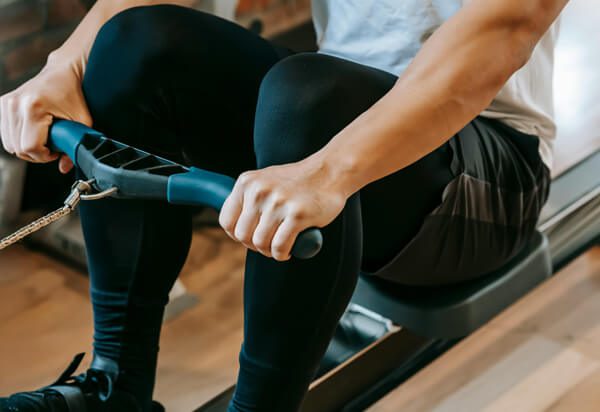
FOI’s compassionate healthcare providers utilize a multidisciplinary approach and employ innovative, state-of-the-art treatments for all patients. Our specialists include orthopedic sports medicine surgeons, primary care sports medicine doctors, physical medicine and rehabilitation specialists, nurse practitioners, physician assistants, chiropractors, podiatrists, physical therapists, and certified athletic trainers.
Our orthopedic urgent care centers ensure timely and convenient initial evaluation and treatment access while facilitating prompt referral to the appropriate specialist. We also offer advanced imaging, including X-rays, ultrasound, CT, and MRI scans.
Our highly skilled physical therapists use advanced rehabilitation techniques to maximize recovery. Trained specialists staff a durable medical equipment department to properly fit all casts, braces, crutches, etc. Patients can receive all their care at one of our convenient locations throughout central Florida and the entire Tampa Bay area.
Sitting out from the sport you love can be just as painful as an injury. The sports medicine specialists at Florida Orthopedic Institute are passionate about helping you return to action safely and as soon as possible.
Schedule with a physician or request an appointment to discuss your options for world-class care at a central Florida location near you.
You might also like:
- When are ACL Injury Symptoms Serious Enough to See a Physician?
- Is My Swollen Knee a Reason to See a Physician?
- Stepping Back onto the Soccer Field After an ACL Injury
- Dr. Baker Featured on Fox13 Discussing Pickleball Safety
- Patient Story: ACL Injury During High School Lacrosse
January 3, 2025

